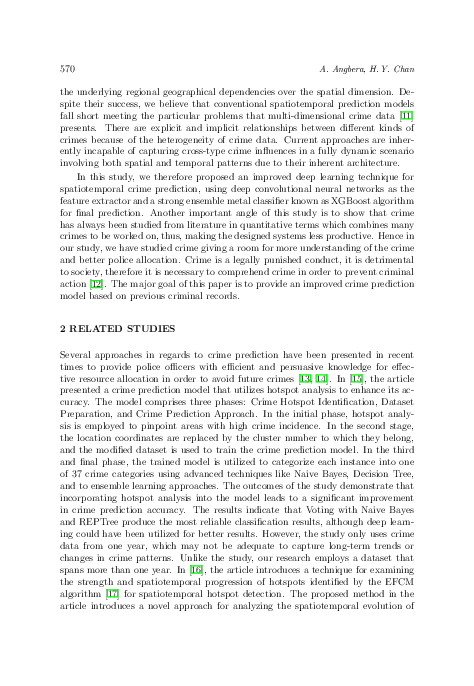Model for Spatiotemporal Crime Prediction with Improved Deep Learning
keywords: Crime prediction, deep learning, spatiotemporal, data mining, ensemble learning
Crime is hard to anticipate since it occurs at random and can occur anywhere at any moment, making it a difficult issue for any society to address. By analyzing and comparing eight known prediction models: Naive Bayes, Stacking, Random Forest, Lazy:IBK, Bagging, Support Vector Machine, Convolutional Neural Network, and Locally Weighted Learning -- this study proposed an improved deep learning crime prediction model using convolutional neural networks and the xgboost algorithm to predict crime. The major goal of this research is to provide an improved crime prediction model based on previous criminal records. Using the Boston crime dataset, where our larceny crime dataset was extracted, exploratory data analysis (EDA) is used to uncover patterns and explain trends in crimes. The performance of the proposed model on the basis of accuracy, recall, and f-measure was 100 % outperforming the other models used in this study. The analysis of the proposed model and prediction can aid security services in making better use of their resources, anticipating crime at a certain time, and serving the society better.
reference: Vol. 42, 2023, No. 3, pp. 568–590


